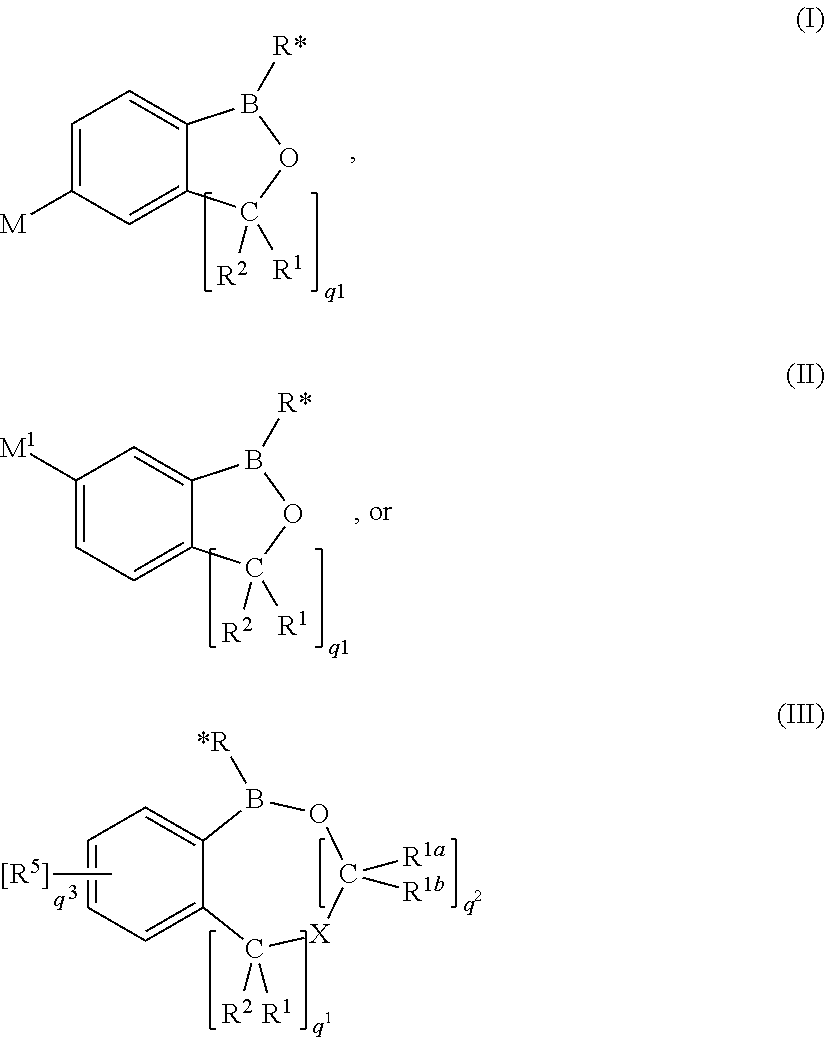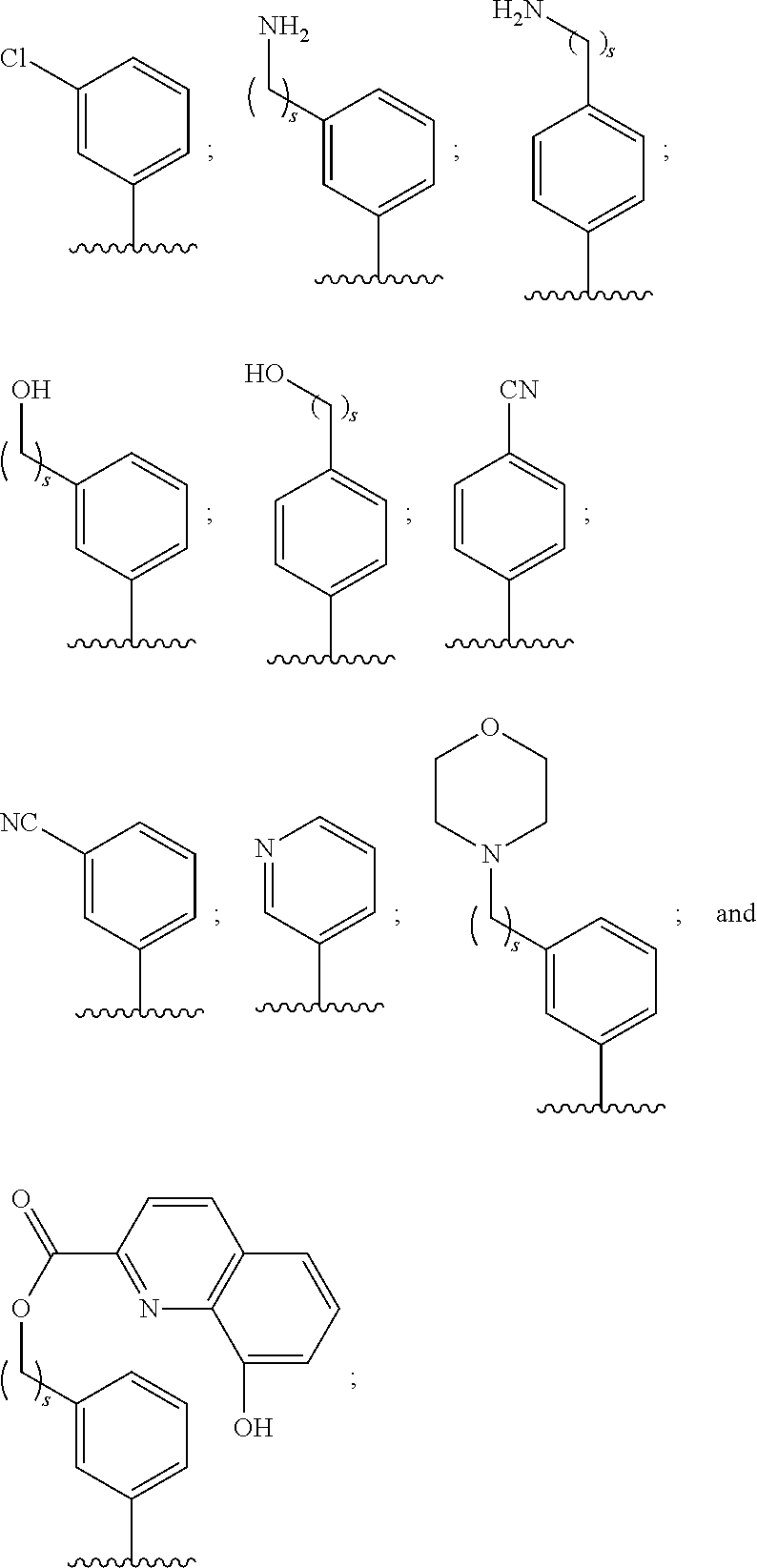Use of benzoxaboroles as volatile antimicrobial agents on meats, plants, or plant parts
a technology of benzoxaborole and volatile antimicrobial agent, which is applied in the directions of boron compound active ingredients, animal repellents, biocide, etc., can solve the problems of not teaching that oxaborole compounds are volatile antimicrobial agents, and oxaborole compounds have not been used in agricultural applications
- Summary
- Abstract
- Description
- Claims
- Application Information
AI Technical Summary
Benefits of technology
Problems solved by technology
Method used
Image
Examples
example 1
[0189]12-Well (7 milliliter (mL volume per well) microtiter plates are used for the in vitro inhibition assay for volatile antimicrobial compounds. A 3-mL volume of full-strength Potato Dextrose Agar (PDA) is added to each well. After cooling, 1 microliter (μL) of 1×106 per mL Botrytis cinerea spore suspension is spot pipetted to the center of the agar. For the first experiment, inoculated plates are allowed to germinate for 5 days at 4° C. For the second experiment, plates are inoculated immediately prior to volatile fungicide treatment. Small Whatman #1 filter disks (Cat. No. 1001-0155) are placed, in duplicate, on the underside of a polyethylene PCR plate sealing film.
TABLE 1Results of in vitro assay for volatile fungicideRate of Compound A(mg per disk)Botrytis inhibition % (in vitro)1.25100%0.63100%0.31100%0.16100%0.08100%0.04100%0.023100%0.01100%0.005100%0.002485%0.00169%0.000646%Control0%
[0190]For determination of the minimum inhibitory concentration (MIC), Compound A (benzoxa...
example 2
[0191]A total of 14 antimicrobial compounds are tested using the in vitro inhibition assay described in Example 1. All 14 compounds are applied to the Whatman disks, in duplicate, in a dose dependent manner (0.31 to 0.0006 mg / disk). The results show that Compound A provides the best control of Botrytis cinerea, with 100% control down to 0.005 mg / disk. Other compounds, such as Compound C, Compound D, and Compound E conferred 100% control down to 0.023, 0.04, and 0.08 mg / disk, respectively. The tested compounds are shown in FIG. 3. Results of nine compounds are summarized in Table 2, where the other five compounds show no detected activity in the ranges tested.
TABLE 2Results of in vitro assay for volatile fungicide in % Botrytis inhibitionRateComp.Comp.Comp.Comp.Comp.Comp.Comp.Comp.Comp.(mg / disk)ACDEFGHJK0.31100%100%100%100%70%100%85%50%48%0.16100%100%100%100%53% 78%80%13%29%0.08100%100%100%100%40% 43%55% 8% 5%0.04100%100%100% 79%18% 13%38% 5% 0%0.023100%100% 80% 79%10% 3%18% 0% 0%0.0...
example 3
[0192]Compound B (FIG. 2; 2-(hydroxymethyl)phenylboronic acid cyclic monoester, a des-fluoro analogue of Compound A), is evaluated in a similar manner as described in Examples 1 and 2 above. The compound is applied to the Whatman filter paper at rates from 0.5 mg to 0.0039 mg / disk. Results show that Compound B inhibits 100% Botrytis cinerea at a rate of 0.0078 mg / disk.
PUM
 Login to View More
Login to View More Abstract
Description
Claims
Application Information
 Login to View More
Login to View More - R&D
- Intellectual Property
- Life Sciences
- Materials
- Tech Scout
- Unparalleled Data Quality
- Higher Quality Content
- 60% Fewer Hallucinations
Browse by: Latest US Patents, China's latest patents, Technical Efficacy Thesaurus, Application Domain, Technology Topic, Popular Technical Reports.
© 2025 PatSnap. All rights reserved.Legal|Privacy policy|Modern Slavery Act Transparency Statement|Sitemap|About US| Contact US: help@patsnap.com



